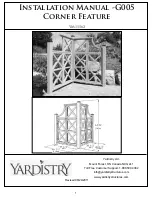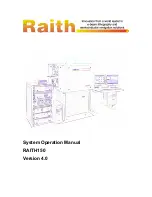
USER'S MANUAL
Operating instructions
ROTOGRAPH-D (120V)
(Rev. 1)
30
6.3.1.3
6.3.1.3
6.3.1.3
6.3.1.3
Preparing the patient (refer to
Preparing the patient (refer to
Preparing the patient (refer to
Preparing the patient (refer to Figure 4))))
1.
Ask the patient to remove all metal objects located in the zone
involved in radiography (necklaces, earrings, spectacles, hair-clips,
movable dental plates etc.).
Make sure that there are no heavy articles of clothing (such as
overcoats, jackets, ties, polo-neck sweaters, etc.) in the radiography
zone.
2.
Have the patient put on the protecting apron or similar protective
devices in accordance with the regulations in force in the various
countries, making sure that it does not interfere with the trajectory
of the X-rays beam.
3.
Bring the patient in standing position up to the chin support and,
using the handle, release the brake button (24) in order to position
the slider so that the chin support resting plane is aligned with the
patient's chin.
4.
Position the patient in the skull-clamp with the chin resting on the
appropriate support and against the vertical reference rod of the
same. Furthermore, position the hands on the lateral knobs.
5.
Press the laser centring device activation button (20). In this way
both reference lights, mid sagittal (45) and Frankfurt’ planes (46), are
lighted on; adjust the patient’s head in such a way that mid sagittal
light is on the respective anatomical plane while the Frankfut’s one
is parallel to the corresponding plane. Horizontal beam (Frankfurt
plane), if needed, can be height adjusted in relation to the patient’s
dimensions; the adjustment is made by acting on the appropriate
knob (18). In order to check the patient’s centring, operator can tilt
the mirror towards himself, thus obtaining the a front view of the
patient.
6.
After the end of the patient’s centring, bring the height of the skull-
clamp a little above the patient’s orbital bone and close the skull-
clamp leaving the two temple clamp roads (7), by acting on the
appropriate knob (9). This will help the patient to hold the correct
position during the examination.
















































